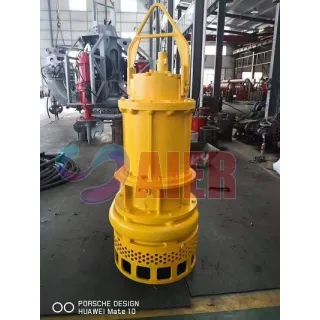តុលា . 02, 2024 16:19 Back to list
submersible slurry pump
Understanding Submersible Slurry Pumps
Submersible slurry pumps play a crucial role in various industrial and mining applications, where the transportation of abrasive and viscous materials is essential. Unlike standard pumps, submersible slurry pumps operate underwater, making them highly efficient in managing the challenges posed by harsh environments. As the name suggests, these pumps are designed to be submerged in the liquids they pump, which allows for the effective handling of a mixture of solids and liquids, commonly referred to as slurry.
Design and Functionality
The core design of a submersible slurry pump features a robust construction capable of enduring extreme conditions
. Typically constructed from materials such as stainless steel or high-chrome alloys, these pumps resist wear and corrosion associated with abrasive materials. The impeller design is also critical; it often includes specialized geometries to facilitate smooth flow while reducing the chances of blockages.Submersible slurry pumps are equipped with a hermetically sealed motor that prevents any liquid from entering the motor housing. This design not only enhances the durability of the pump but also enables it to function efficiently at varying depths. The motor is cooled by the surrounding liquid, which allows the pump to operate continuously without overheating, unlike surface-mounted alternatives that may require additional cooling mechanisms.
Applications
These pumps find extensive use in a variety of sectors. In the mining industry, for instance, they efficiently transport mineral slurries from extraction sites to processing facilities. In construction, they are used to remove water mixed with sediment and debris from trenches and excavations. Wastewater treatment facilities also utilize submersible slurry pumps to manage sludge and other byproducts effectively.
submersible slurry pump

The ability to handle high solid concentrations makes these pumps invaluable in dredging operations as well, where they help to clear waterways and maintain navigability. Moreover, in agricultural contexts, they play a vital role in managing slurry produced during animal waste processing.
Advantages
One of the primary advantages of submersible slurry pumps is their efficiency in energy use. Since they operate submerged, they utilize the hydrostatic pressure of the liquid to push the slurry, often resulting in lower energy consumption compared to traditional pumping systems. Additionally, their vertical design reduces the need for extensive piping, further contributing to cost and space savings.
Furthermore, their maintenance is typically straightforward. Most models are designed for easy disassembly, allowing for quick servicing and repairs. Given their critical role in many operations, ensuring peak performance through regular maintenance can extend the lifespan of these pumps significantly.
Conclusion
Submersible slurry pumps are vital components in industries that require the efficient transportation of abrasive slurries. Their robust design, energy efficiency, and versatility make them indispensable tools, contributing to efficient operation across various applications. Investing in high-quality submersible slurry pumps ensures sustained productivity and reliability, making them a wise choice for any operation dealing with challenging materials.
-
China SP Slurry Pump Supplier – Vertical Sump Pump Rubber Lined Manufacturer & Factory
NewsJul.05,2025
-
High Quality Submersible Slurry Pump with Agitator Manufacturer & Factory Reliable Submersible Pump Solutions
NewsJul.05,2025
-
Cheap Dredge Pump for Sale – China Cheap Submersible Pump for Wastewater Supplier
NewsJul.05,2025
-
Wholesale Casting Dredge Pump Part - High Quality China Manufacturers & Suppliers
NewsJul.04,2025
-
High Quality Slurry Pump Seals Reliable China Suppliers & Manufacturers
NewsJun.24,2025
-
High Quality Portable Submersible Slurry Pump Supplier & Manufacturer from China
NewsJun.10,2025
